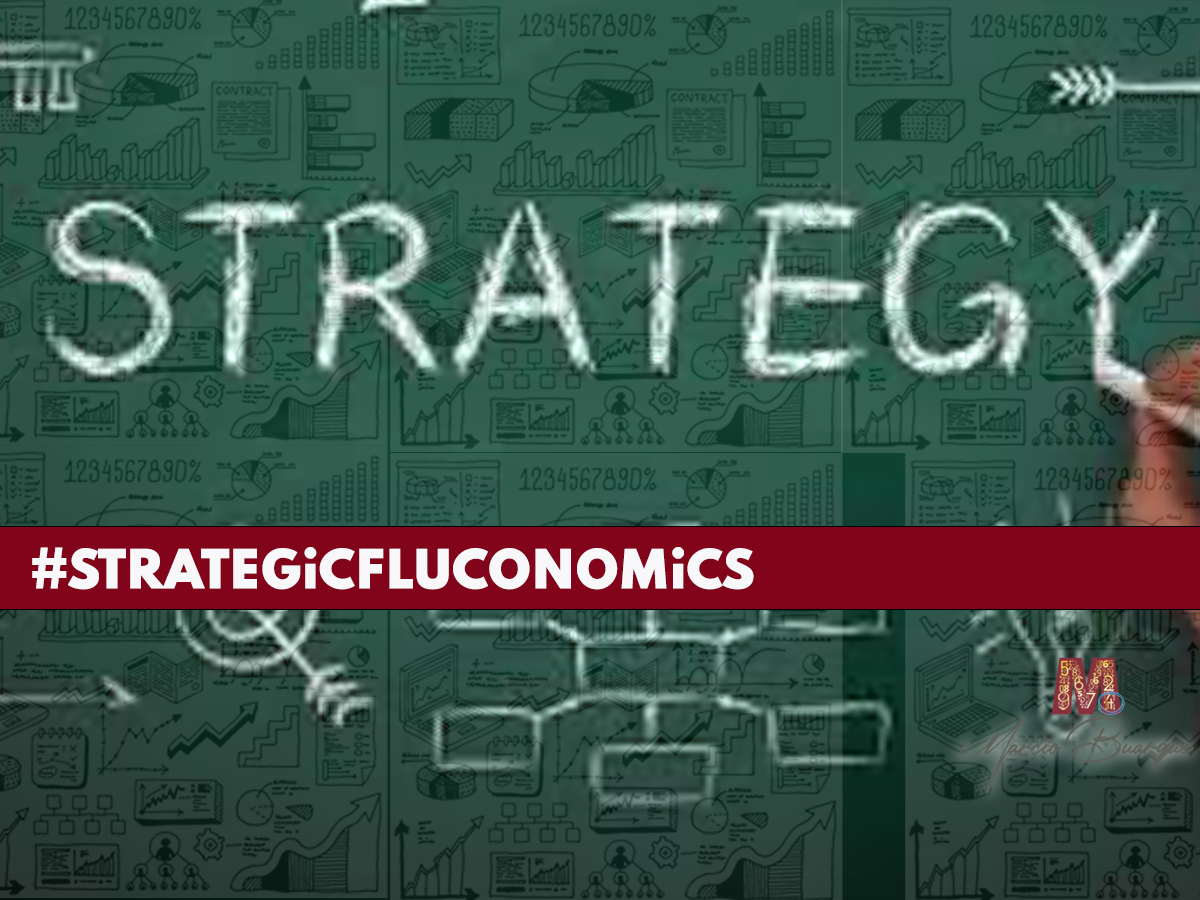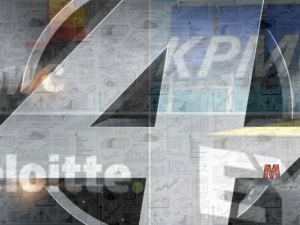
Let’s go to one more “draft for discussion” of what I understand to be the elements relevant to the five strengths of the model, starting with competition/rivalry.
(1) COMPETiTiVE RiVALRY & (2) SUBSTiTUTES
How many competitors does Fluminense have?
Is the competition restricted to the fanciful arch-rival of Fluminense? Given the revenue gap, calling it a rivalry is pathetic these days.
Would the competition be regional? It is certainly not the only component, but where the fiercest battlefield and the best target audience to be conquered takes place.
It is no exaggeration to understand that there are already more “big clubs” in Rio de Janeiro than the size of the football industry in the region can handle.
In the national field, Fluminense has powerful competitors in most states. In this regard, it is worth returning to what was mentioned above about the excess of clubs in their regions of origin.
More commonly, we observe two significant forces in the main sports centers, except in São Paulo, which hosts four so-called large clubs. São Paulo also indicates having more big teams than the industry can handle, not because of the market size itself but because Football funnels rivalries between two or, at best, three clubs.
But as a rule, we will always have two predominant clubs in their regions of origin, which is not observed in the Northeast, where Flamengo manages to rival in influence and size with the biggest teams in the area.
São Paulo is a complex market to analyze because three of the four clubs have disastrous management in their associative models despite their size and purchasing power. On the other hand, there are emerging forces, the result of professionalization and investments, and business models that are not based on the size of their fan base.
At this point, it was already apparent that competition is fierce in the Football Industry, which implies greater complexity in revenue generation from a commercial point of view.
But we live in a globalized world, so competition has no longer borders. Still thinking only about football, there is already rivalry, at least in the fight for attention and consumption, with other leagues worldwide.
It is necessary to remember that a fan divided between more than one football team stops concentrating his expenses on just one of them. The outsider in this context, a European club, can only gain in this environment. It’s yet another setback for the local club.
But it does not stop there. Competition in an entertainment market sounds like the famous Joseph Climber joke.
Let’s talk about substitutes…
There is competition with other sports and more deviations in the concentration of fan spending. And there is competition from a multitude of other leisure and entertainment options.
A soccer club must fight for spots in the TV grid in the dispute for the attention and consumption of a consumer with hundreds of options available.
And in this aspect, some myopia, sometimes paid, harms clubs even more. That fallacy of real fans, or now repackaged as much more than a regular fan. This “commercial strategy” works in a refractory way, as the excluded and snubbed in the stupid castes they invent will look for other markets to have fun and leisure. Consequently, his spending will be far from football and the club where he was passed over because of the complex and arrogance of a half dozen stooges.
With the development of the streaming industry, this question of substitutes ended up being boosted.
In addition to providing an infinity of leisure options, the service also started to bring a vast international sports menu at prices infinitely lower than those practiced in the expensive football market. They always sell this idea as extra revenue. Still, in the medium and long term, the trend is pressure to reduce current margins and perverse effects on the products exclusively dedicated to football subscribers.
It potentiates the deviation in fan/viewer consumption, in short, a true revolution in revenue generation, which, in my view, has been wrongly analyzed by the majority.
We may even arrive in a scenario where streaming prevails and the audience increases, but this will imply the end of the current transmission model and its monopolies.
In a more in-depth strategic study, we would have to quantify these markets, their rivalries, and substitute potential effects. There is even this type of information out there, and with some compilations and modeling, it would be feasible to quantify it all. But all this effort is not fit for a newsletter.
(3) THREAT OF NEW ENTRY
In this force of the model, it is pretty easy to identify that the new Brazilian Corporate Clubs (Sociedades Anônimas de Futebol – “SAF” in Portuguese) are a threat to new entrants.
I would go even a little further because, given the current financial situation in several managements of associative models in football, clubs that start to organize themselves aiming to become a SAF already have clear competitive advantages over those who will die embraced to their amateur form and awkward to do football.
However, it is necessary to analyze these new SAF by exercising skepticism as much as possible, distancing oneself from passions and fallacious narratives. There is a risk that newly formed SAFs will be camouflaged associative models. The wolf in sheep’s clothing is super common in the football segment.
The process of transforming associative models into business clubs is full of intermediaries who do not shy away from lying and deceiving to raise their commissions.
We are thinking about football strategically in this thread. Therefore, it is necessary not to get carried away by the herd effects caused by those who reduce football to create value only for intermediaries.
Not every SAF will become a powerful club. There’s no room for it. A new league full of SAF will not be more robust simply because it has become more professional.
We have just read in the previous topic that the football market is highly competitive. Obviously, a set of SAF, in theory, has better technical conditions to compete and structure itself than this bunch of decadent associative models, but don’t think of SAF as a magic solution. In addition to being utopian, it sounds like intellectual dishonesty to believe that everything is resolved that way.
Returning to that issue of excess of so-called big clubs in Rio de Janeiro, Fluminense has, in theory, two SAF threats in its region.
A complex situation in several aspects, from blindly believing that these new SAFs will be more potent by chance to whether these new businesses are viable in the face of their billion-dollar debts. All this in an environment of society with associative models, another beautiful complicating factor for the success of these endeavors.
And going back to the competition, the model assumes that all forces interact and affect a business; there is the Flamengo factor, which has billionaire revenues that exceed the sum of its three supposed rivals.
But considering Brazil and places where rivalry is restricted to two clubs, the new SAF, keeping the potential theoretical risk of these sinking due to inaptitude, schemes, and unpayable debts, there is plenty of room for new players to emerge, better managed and with more financial resources.
To the extent that Fluminense signals that it will never give up its boring and wasteful associative model, the prospects in this perspective of new entrants are dire. In addition to making it unfeasible locally, it will lose appeal on other competition fronts and substitutes.
(4) POWER OF CUSTOMERS
As described in the last Issue, in this force, factors such as the electoral power of associated fans, the electoral power of non-fans using the social club, and the passionate side of the business come into play.
The existence of the associative model will make us have a base of millions of fans, with a tiny portion with much more power than it should have in terms of influence.
Thousands of fans may not like a manager or a coach. Still, if in the bubble of power of the associative model, these people serve the associates’ interests, their future and permanence are guaranteed.
The most pernicious side of all this is that this bubble of the associative model ends up having an infinity of benefits, backed precisely by thousands of fans who consume football and justify TV quotas and sponsorships.
In addition, the growth of the base of supporters who contribute and generate revenue is also associated with subsidies, challenging the thesis that the larger the fan base, the greater the bargaining power of the business (football club).
There is an old perception that the fan is faithful to the extreme, which would shield football a business from the lack of quality of what is delivered on the field and in related products.
But this perhaps only applies to older generations. The younger ones certainly don’t have the tolerance and resilience to put up with lousy sporting moments, even more so when they are continuous. They were born in a world of multiple entertainment options, without borders and, above all, without values that reinforce the concept of loyalty.
In the past, life was limited to a few movies and TV with little sports programming and live football at stadiums. At this conjuncture, it was easy to retain fans, especially in a country so passionate about football. But that no longer exists.
In addition to needing their team to be in the spotlight in some way, as there is a whole online life of ostentation and envy, the new generations want easy things, endless benefits, in short, paying very little and having as much as possible.
Nowadays, to expand your fan base, you have to concede too much or have a sporting performance that is somewhat complicated to deliver in this environment of abyssal differences in revenue between football clubs.
(5) POWER OF SUPPLY
In this force, there are different aspects to be analyzed. Here it becomes even more evident that football is not a business like any other. It has peculiarities and singularities force us to adopt a different approach from the vast majority of solutions and corporate teachings usually adopted.
In the football industry, it is feasible to charge for many daily consumption items. The exposure of brands and products is part of the marketing efforts of several suppliers, and what would be an expense for the vast majority of companies can become revenue for football clubs.
In this aspect of commercial income, Fluminense, despite lying horribly in the published figures, arbitrating income in exchanges, and internal consumption of material, has a poor performance compared to several top clubs.
So insignificant that it’s even challenging to assume that it’s just an effect of amateurism and ineptitude. But this type of matter requires investigations within the club environment.
And speaking of weird things, there is a unique factor in this strength of suppliers in the Football Industry: agents/investors are suppliers of athletes.
It is not worth going into details about how agents came to have an absurd influence within modern football. These are problems that were born in misguided regulation, combined with decades and decades of amateurism and a lot of trickery in clubs. Finally, today an investor and its agents have excellent conditions to maintain rights over all players, from minors to athletes at the end of their careers (or ex-athletes in the exercise of the profession).
Considering strategy and aiming at gains for the clubs and their operational continuity, it is evident that this relationship needs to be adjusted. And this is something challenging to do.
Although there are elementary actions not identified in Fluminense that can mitigate the effects of this unbalanced relationship, agents have professionalized their performance and today have even made significant world clubs hostage to their will and a means of high gains with reduced risks.



